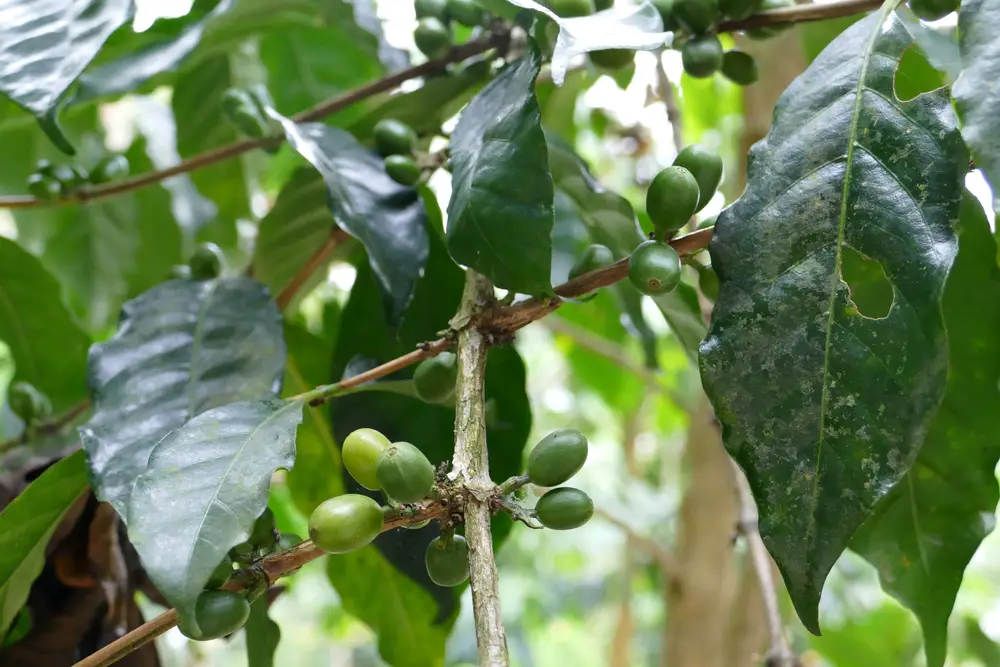When raising coffee plants, the plants are grown in a nursery and then transplanted to a field when they are about a year old. This method is widely used in coffee-growing countries such as Colombia, Ethiopia and Brazil as it allows for careful selection and cultivation of high-quality coffee plants.
Table of Contents
The 2 main stages of the coffee seedling process
The process of coffee seedlings involves two basic stages:
- The rearing phase: Here the young coffee plants are carefully tended and raised.
- The transplantation phase: Here the plants are selected and transplanted to the field where they will continue to grow and produce coffee beans.
The growing phase
Growing coffee seedlings starts with planting coffee seeds or seedlings in a nursery. The seeds or seedlings are usually planted in pots or trays filled with a mixture of soil, compost, and other nutrients. The pots or trays are then placed in a greenhouse or other sheltered space to ensure the young plants receive adequate water, sunlight, and nutrients as they grow.
During this initial growth phase, the nursery staff tend to the coffee plants and ensure they receive the proper attention and care. This includes watering the plants regularly, fertilizing them with a balanced mix of nutrients and pruning to promote healthy growth. As the plants grow, they are gradually repotted into larger pots or trays to give them more room to grow and thrive.
Transplanting coffee plants
After about a year, the coffee plants are ready to be transplanted outdoors. At this point, plants are carefully selected for size, vigor, and general health. The healthiest and strongest plants are selected for transplant as they are more likely to grow in the field and produce high quality coffee beans.
Before transplanting the crops, the field is prepared by clearing it of weeds and debris, and adding fertilizer or other nutrients to the soil as needed. The plants are then carefully removed from their pots or trays and placed in holes in the field, arranged in rows to allow for good growth and development. After transplanting, the coffee plants are watered and fertilized to allow them to adapt to their new environment and continue growing.
Advantages of the seedling method
The seedling method has several advantages over other methods of growing coffee plants. One of its main advantages is that it allows careful selection and cultivation of high-quality coffee plants. By growing the plants in a nursery and carefully controlling their environment, it is possible to produce vigorous and healthy plants when transplanted to the field. This can result in higher yields and better-quality coffee beans.
Another advantage of the coffee tree nursery is that it can also be used in areas where the soil quality is not ideal for growing coffee plants. By growing the crops in a nursery and carefully controlling their environment, one can produce high-quality crops that are better able to withstand the challenges of the field. This is especially useful in areas with poor soil or difficult climatic conditions, as it allows farmers to grow coffee crops that would otherwise not thrive in these conditions.
Conclusion
The seedling method is an important part of coffee growing and helps ensure plants are strong and healthy when transplanted to the field. By growing the plants in a nursery and carefully controlling their environment, it is possible to produce high quality coffee plants that are more likely to grow in the field and produce high quality coffee beans.



